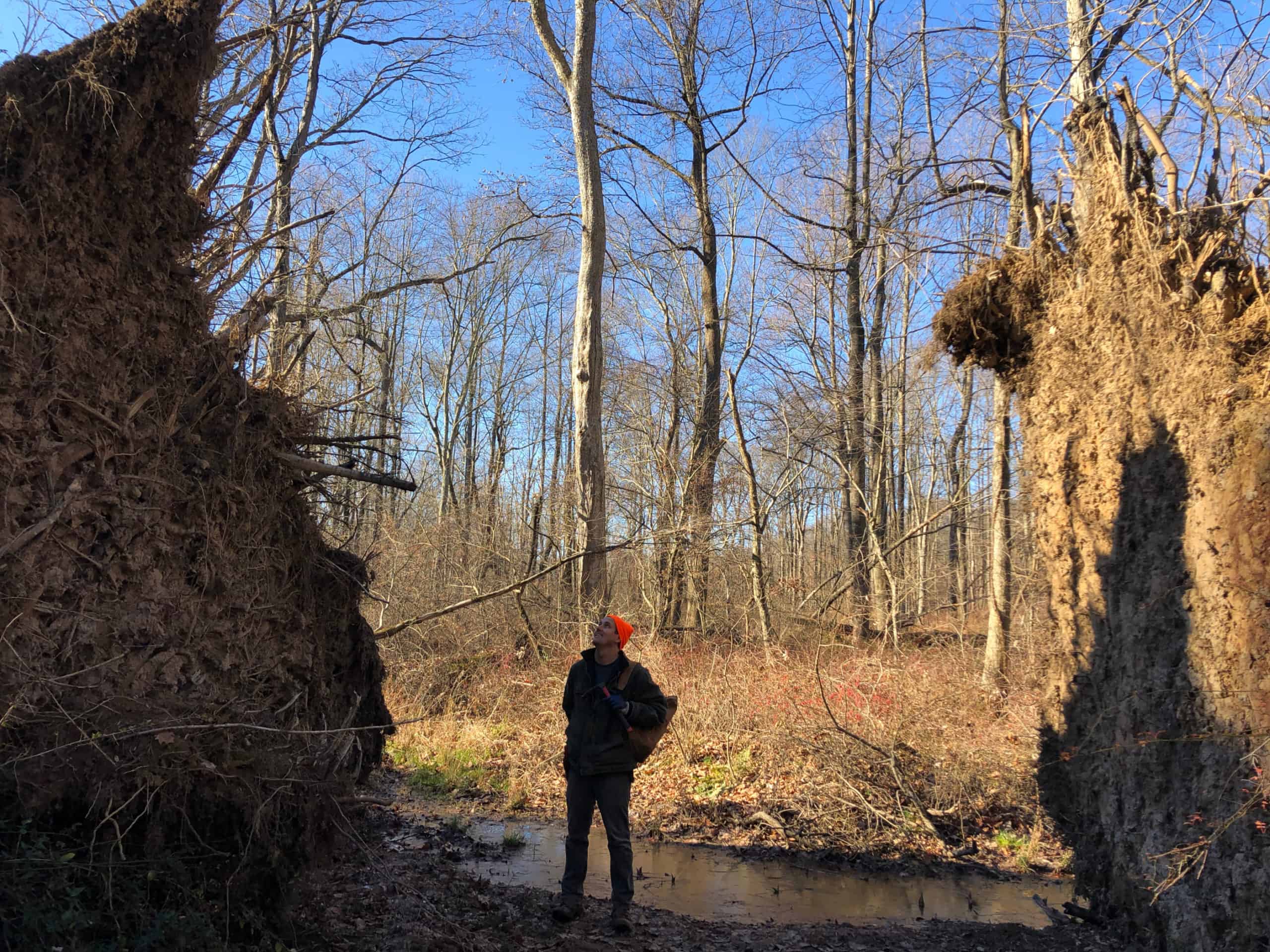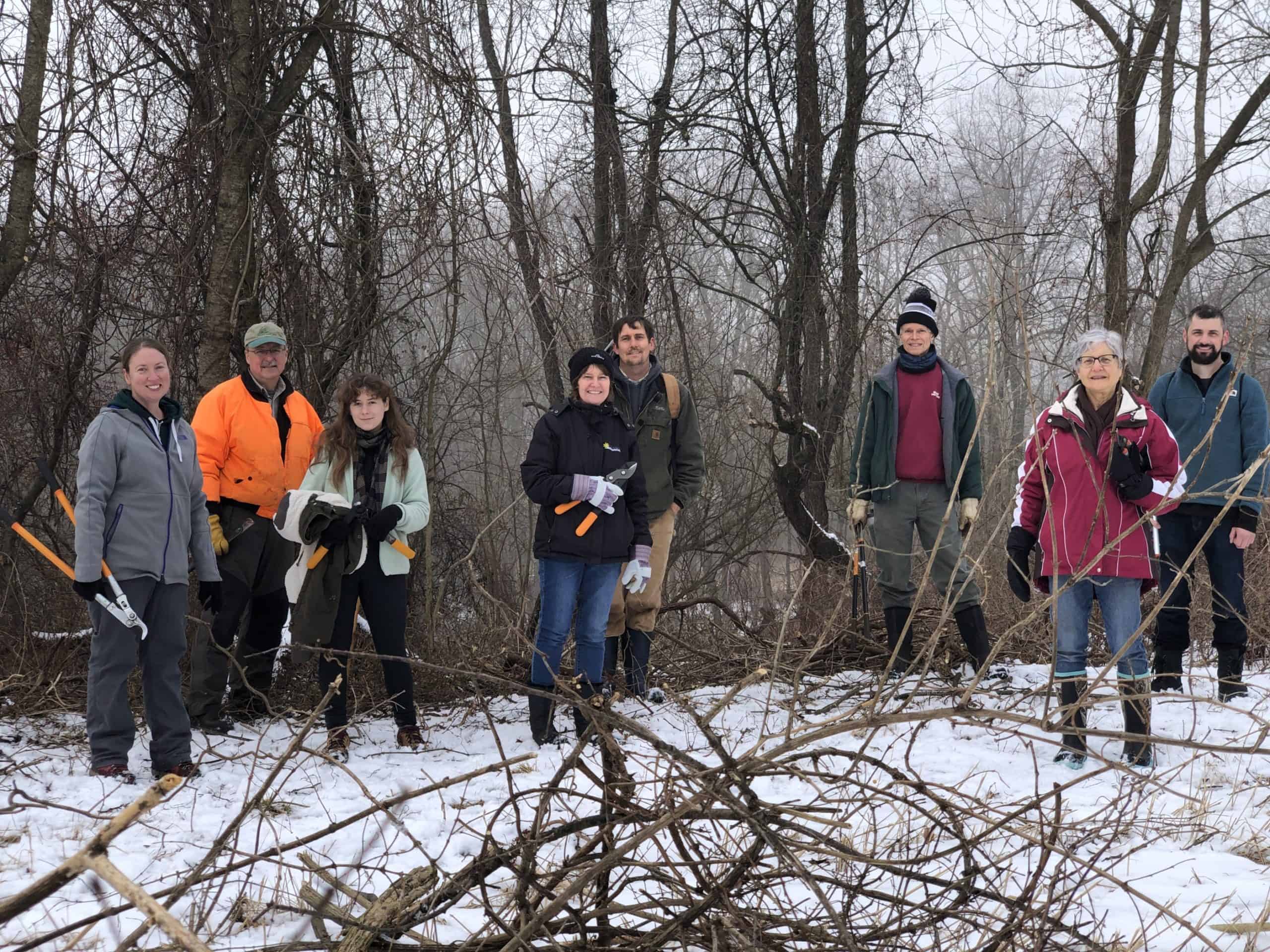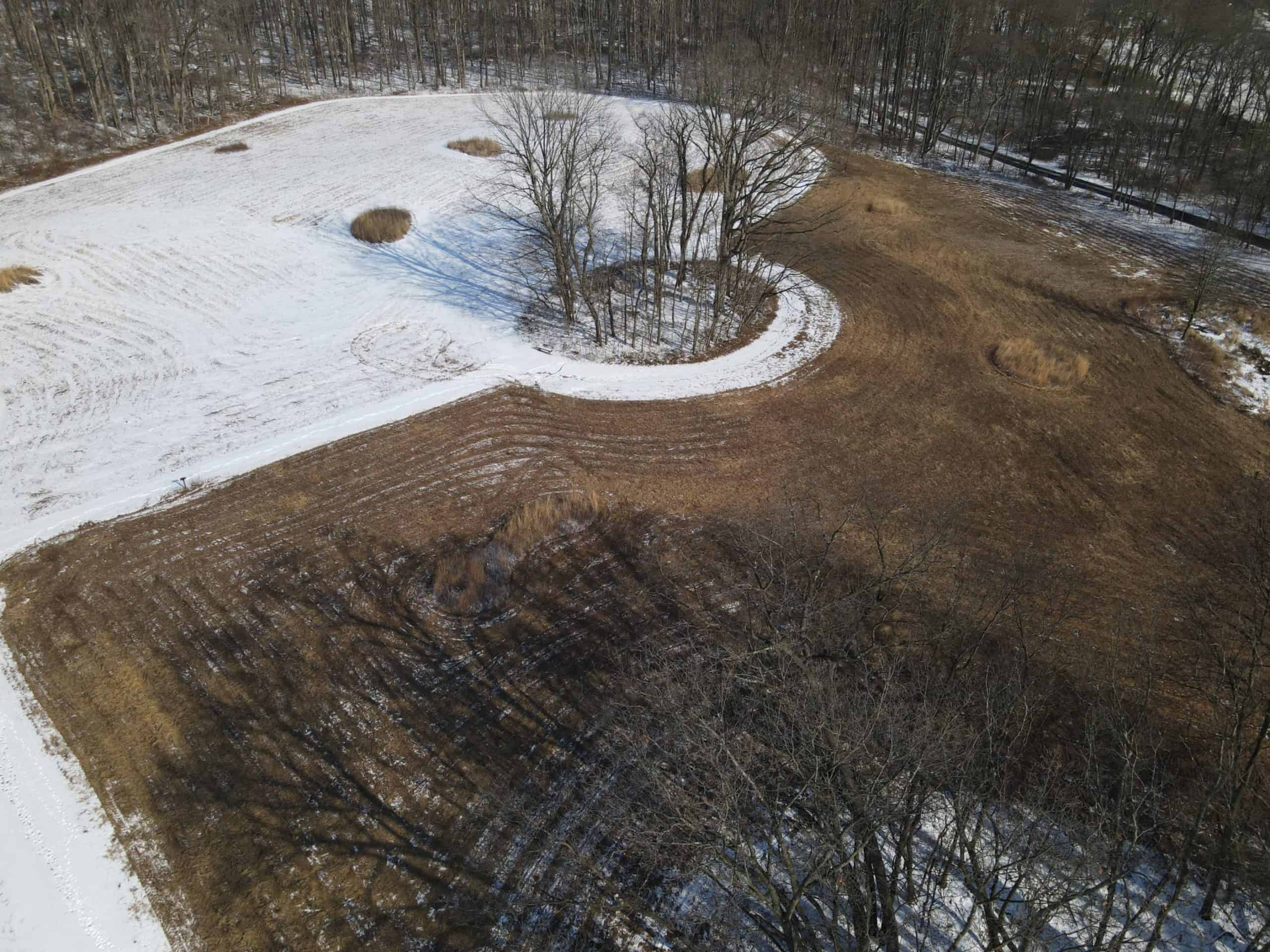Crow’s Nest: Winter projects
By Daniel Barringer, Preserve Manager.

Photo: Daniel Barringer
It has been a cold winter so far and that helps us get certain work done. Being bundled up in heavy canvas clothing makes it easier to wade through the multiflora rose thorns as we post boundary, for example. Above, Cody pauses to admire the upturned root plates of two gigantic trees that fell over—in opposite directions—right on the border of Crow’s Nest Preserve with State Game Lands #43. Teachable moment: most tree roots do not mirror the canopy and go deep into the earth like a tap root; soils near the surface are where the oxygen, sufficient but not too much water, and organic matter are located, so most of the roots are also there. I always say that a tree stucture is like a wineglass on a dinner plate; if the wine glass is what you see of the tree above ground, the dinner plate is where the roots are—often extending well beyond the drip line of the canopy and interweaving with the roots of other trees. That’s one reason trees in a forest are better anchored than a single specimen in a lawn, for example, though clearly as in this case, all trees do eventually fall for one reason or another.

Photo: Daniel Barringer
Volunteers this week helped clear invasive shrubs and vines from the hedgerow that spans the “40-acre field.” This is a project I’ve been indulging myself with this winter, since in the almost 26 years I’ve been here I never got around to maintaining it, and that showed. The autumn olive, shrub honeysuckle, multiflora rose, privet, bittersweet vines, and barberry not only were crowding out the desirable trees and shrubs that naturally came up there (black cherry, black walnut, viburnum, hackberry, and oaks) but were also creeping out into the farm field surrounding the hedgerow. The trees are now being freed to grow without competition for light and there will be a few opportunities to replant gaps with additional native trees. Although this project is very labor-intensive, we have found that in other hedgerows where we were able to complete the initial work, the maintenance of it afterward—though absolutely required—is relatively easy and efficient.

Photo: Daniel Barringer
Finally, we also have completed our winter mowing of meadows, considerably ahead of schedule. We wanted to take advantage of the extended sub-freezing weather so that the ground, otherwise saturated with water, would be frozen and could support the weight of the tractor without making ruts or compacting the soil. Some years it’s difficult to get them all done because it’s too warm, but that was not the case this year. Above, the Chief’s Grove surrounded by meadows: the area above the grove Cody mowed before the most recent snow, the part below I mowed afterward when there was a little bit of snow still on the ground. I mowed right over top of the snow and the cut grasses and goldenrod covered the ground with brown stems. The little spots left unmowed in both halves are to maintain a little bit of habitat standing so that it doesn’t all get altered at once.
Although we still appear to have significant winter weather ahead of us it won’t be long until spring projects get underway. It’s just six weeks until prescribed fire season begins, and we have a pollinator patch planting planned as well as several other projects.
